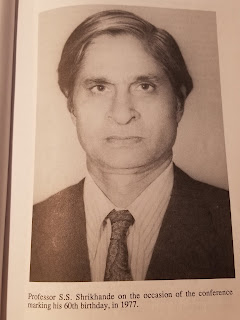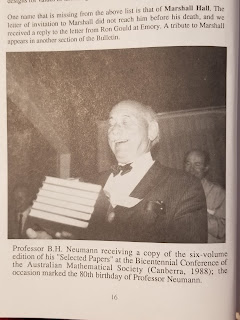Honorary Fellow S. S. Srikhande

S. S. Srikhande . His friends call him "Shrik", but he is also often referred to as SSS. The development of to-day's very strong group of Indian researchers in Combinatorics is due largely to the pioneering research of R.C. Bose and S.S. Shrikhande. One of the few times that Combinatorics made the pages of the New York Times was when Bose, Parker, and Shrikhande disproved the famous Euler conjecture that there were no pairs of orthogonal Latin squares of side 4n+2. Shrik is such an innovative research worker in Design Theory that it is difficult to single out particular achievements, but many colleagues would cite his work on the extension of quasi-residual designs for values of lambda greater than 2. From his citation as one of the first Honorary Fellows, BICA (1), 1991. From his well-cited wikipedia page: Sharadchandra Shankar Shrikhande (born 19 October 1917) is an Indian mathematician with distinguished and well-recognized achievements in combinatorial mathema

